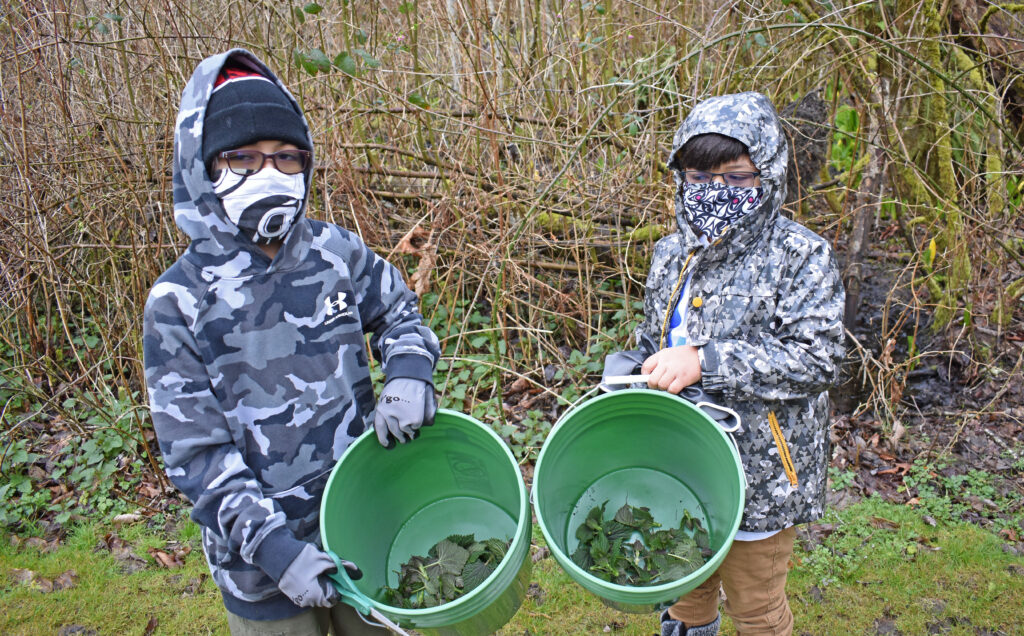Photos and story by Lisa Pemberton, Puyallup Tribal News Editor
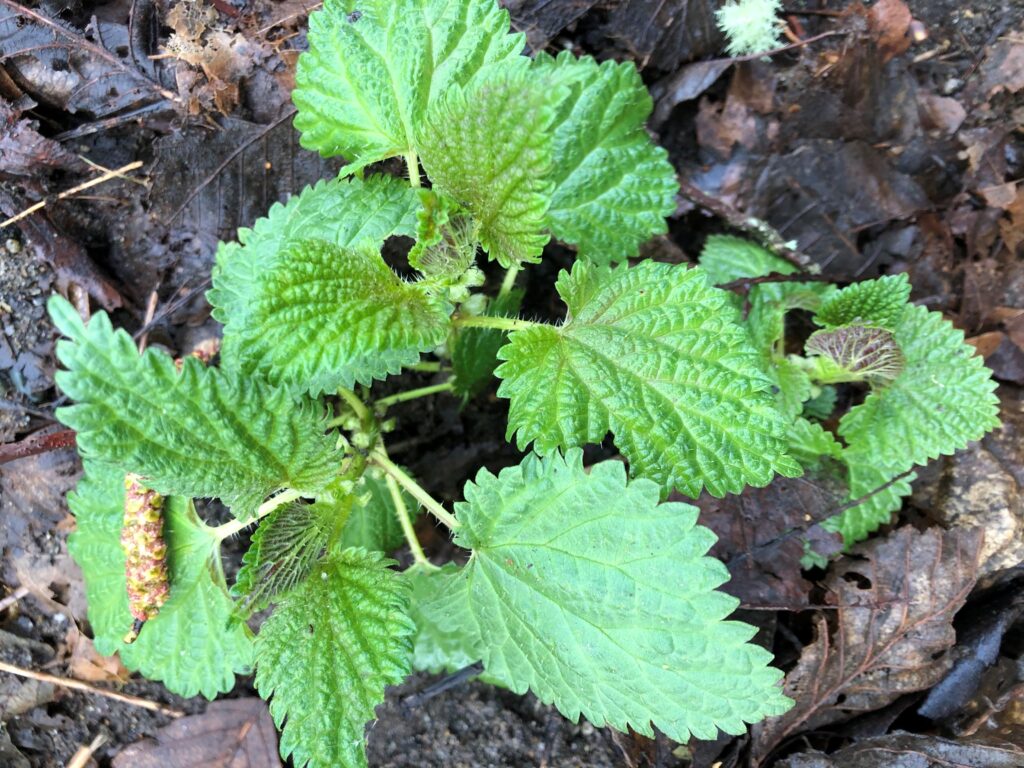
Harvesting nettle looks like…
Green and sometimes purple-tipped plants with pokey white hairs on the stem.
Long sleeve shirts, jeans and sturdy leather gloves to protect you from the sting.
Plastic buckets that fill up quickly – especially when you find a good patch!
Harvesting nettle sounds like…
Birds chirping.
Scissors snipping.
Friends visiting together.
An opening prayer of gratitude, and a promise to only take what we need.
Harvesting nettle smells like…
Damp earth on a spring morning.
Skunk cabbage from a nearby swamp.
Coffee in a to-go cup that will help you stay warm.
Harvesting nettle feels like…
Boots squishing in the mud.
A little hesitation at first – we usually avoid those plants when we’re in the woods.
Exercise, especially on the lower back.
A strong connection with our ancestors, who used this plant to treat a variety of ailments from arthritis to upset stomachs.
A big responsibility. “We have to have the upmost respect for the spirit of that plant because that plant provides for each one of us, medicinally, spiritually, mentally, physically,” instructor Dayleann Hawks said during the March 20 nettle harvest field trip hosted by the Culture Department. “So when you’re out there harvesting be careful not to step on the new growth. Be careful not to step on the other plants. … We want the plant people to keep producing this medicinal stuff for our homes and bodies.”
Harvesting nettle tastes like…
Fruit smoothies.
A zesty pesto.
Minestrone (or even nettle) soup. Hawks recommends using it in any recipe that calls for spinach. Remove the sting by boiling it for three minutes, and then add it to an ice bath to stop the cooking process. Nettle leaves can also be steeped for tea and used in salad. Learn more about harvesting, cooking and using nettles as medicine in a video by Northwest Indian College’s Cooperative Extension at https://vimeo.com/108420031.
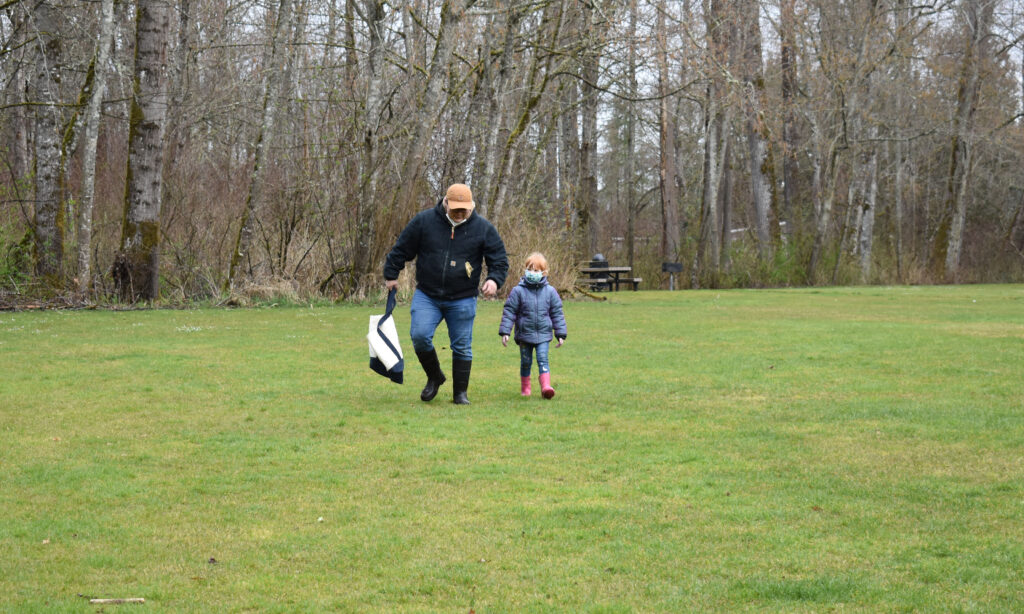
Pictured above: Harvesting nettle is time consuming, but it’s also a great family activity. After the March 20 field trip, Puyallup Tribal Member Evan McMahon and his 5-year-old daughter, Rosalie, donated half of their nettle harvest to the Culture Department’s Traditional Medicines program. They had big plans for the rest of it. “I’m very excited to make some tea and soup,” he said.
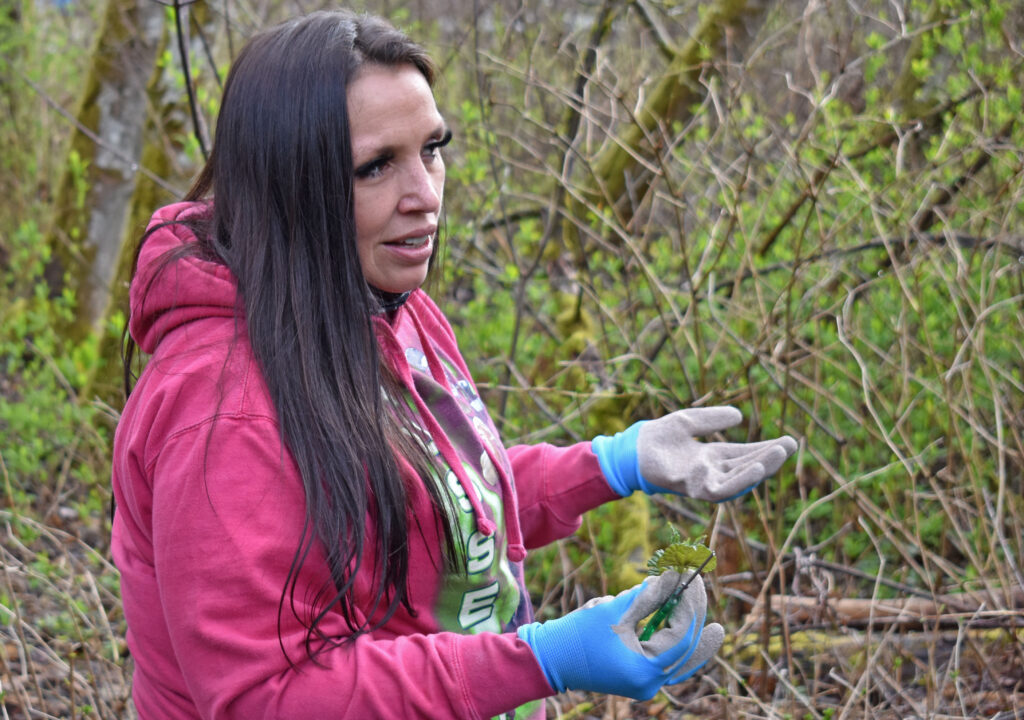
Pictured above: Instructor Dayleann Hawks said nettle has a variety of uses. It can be eaten to help combat blood sugar, and boost the immune system. The plants make the best food in the springtime, when they are small. Larger plants can be harvested year-round for tea, Hawks said. The larger plant’s stems can be dried and used as cordage in weaving projects.
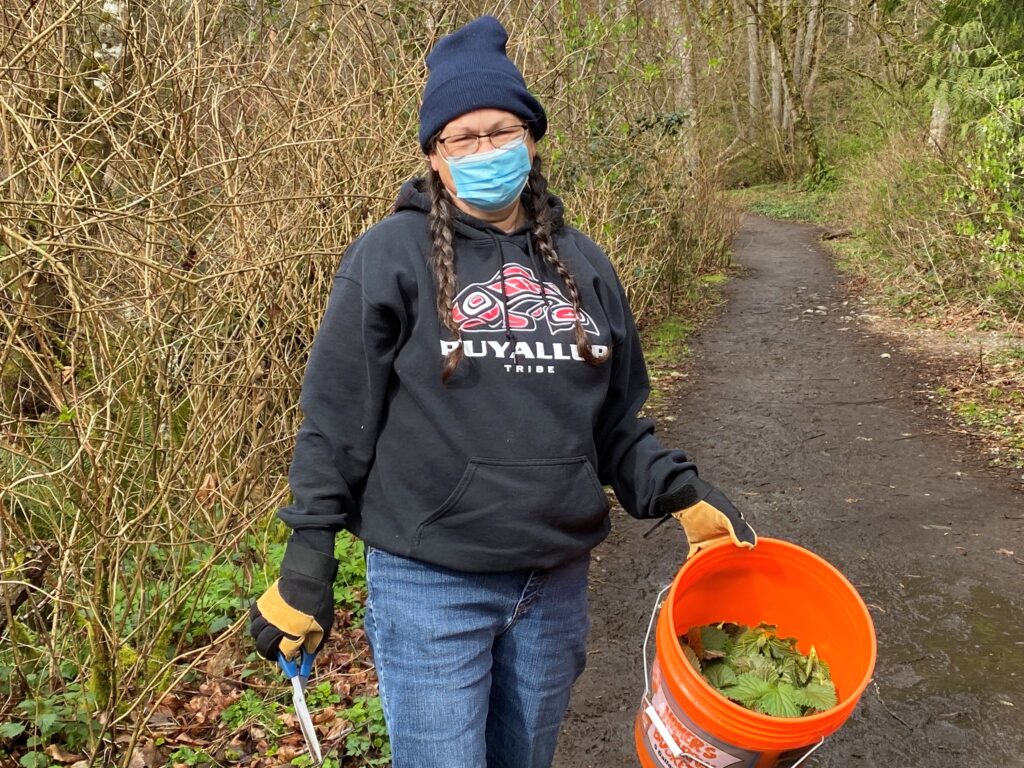
The Puyallup Tribal Culture Department led three field trips during the month of March to gather nettle. Participants wore masks, practiced social distancing and were invited to donate a portion of their harvest to help support the Traditional Medicines program. The Culture Department has offered traditional tea and medicine throughout the pandemic for Tribal Members and members of the Tribal community.
